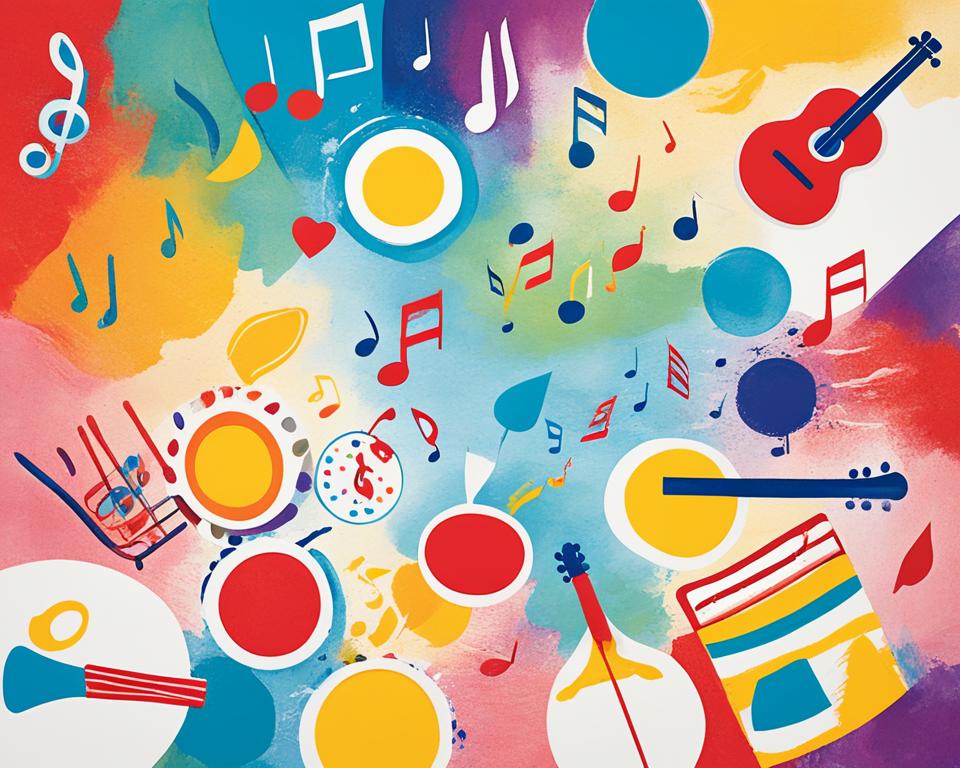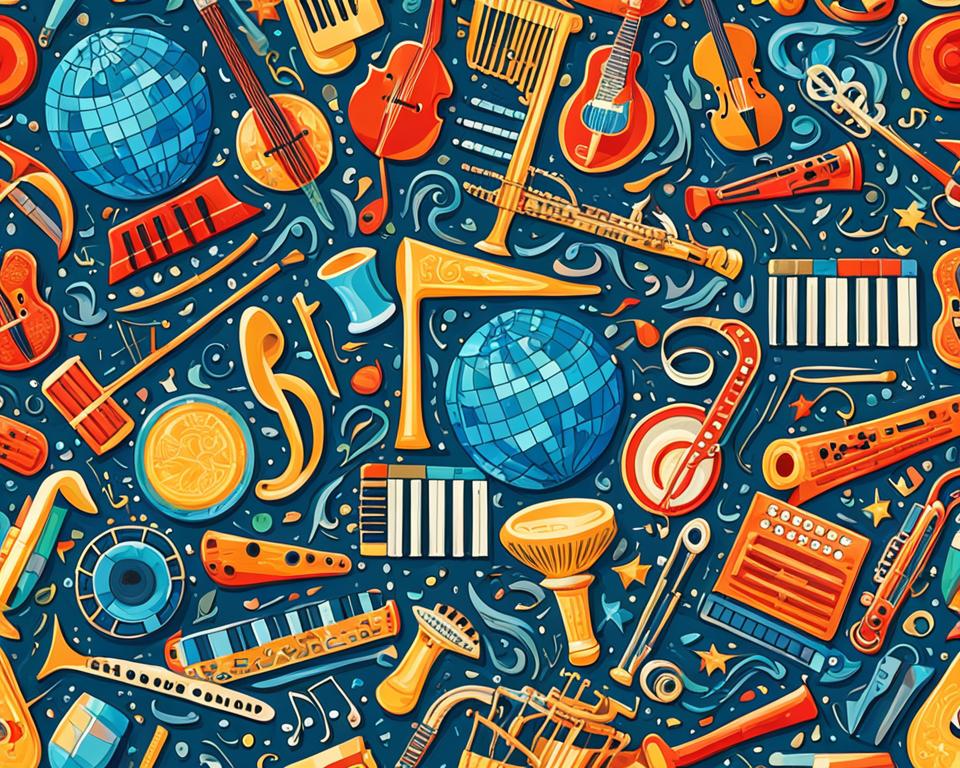As an affluent language learner, I have often found inspiration and a sense of safety in the realms of art, music, and physical education. However, I understand that some students may feel insecure or not fully understood in these environments. To promote language acquisition, it is essential to create engaging conversations and a genuine sense of belonging in these classrooms.
Two key elements for acquiring language are comprehensible input and multiple opportunities for low-stress output. Art, music, and physical education classes can provide these invaluable opportunities through techniques like bringing in books, incorporating group or partner talk, providing sentence stems, and creating interactive word walls. By leveraging these methods, I can immerse myself in the language education journey, fostering multilingual learning and language immersion experiences that ultimately enhance my communicative competence and lifelong language acquisition.
Key Takeaways
- Art, music, and physical education classes can provide opportunities for comprehensible input and low-stress output, essential for language acquisition.
- Techniques like books, group/partner talk, sentence stems, and interactive word walls can foster engaging conversations and a sense of belonging in these classrooms.
- Integrating art and music into language learning can enhance cross-cultural understanding and linguistic development for the affluent learner.
- The language education journey for the affluent often involves personalized language immersion programs and exclusive cultural exploration opportunities.
- Leveraging the neuroscience of music and language can support lifelong language acquisition and multilingual learning strategies.
The Power of Music in Language Acquisition
Music and language are inextricably linked, as they are both processed in the same area of the brain and share complementary systems of communication. The musicality of language can enhance fluency through imitation and develop an awareness of sounds, rhythms, stresses, and intonations, positively affecting language accent, memory, and grammar. This connection between music and language learning has been extensively studied and confirmed by numerous researchers.
Music as a Catalyst for Vocabulary Retention
Numerous studies have demonstrated the role of music as an effective tool for developing memory of vocabulary and other language components like grammar and pronunciation. By engaging the brain’s emotional and auditory processing centers, music can lower inhibitions, enhance working memory, and facilitate long-term recall of words for language learners. This multilingual approach to language acquisition can be particularly beneficial for the affluent learner, who may have access to a diverse range of musical and cultural experiences.
Songs as a Tool for Grammar and Pronunciation Development
The rhythmic and melodic nature of songs can also be leveraged to support the development of grammar and pronunciation skills. By immersing learners in the cultural and linguistic nuances of a target language through music, language learners can enhance their communicative competence and deepen their cross-cultural understanding. This interdisciplinary approach to language education can foster a lifelong love for continuous language acquisition and prepare the affluent learner for success in an increasingly globalized world.
Art as a Medium for Cultural Immersion
Art is a powerful medium that can complement the language education journey, particularly for the affluent learner. Much like music, art can facilitate language processing, improve motivation, and develop a deeper understanding of diverse cultures. By exploring the intersection of art and language, language learners can engage in a more immersive and enriching educational experience.
Visual Storytelling and Cross-Cultural Understanding
The visual storytelling inherent in art can serve as a powerful tool for enhancing cross-cultural understanding. Through the interpretation and analysis of artistic expressions, language learners can gain insights into the values, traditions, and perspectives of the target culture. This deeper engagement with the cultural nuances reflected in art can foster empathy, curiosity, and a genuine appreciation for diversity.
Appreciating Diverse Artistic Expressions
Exploring a wide range of artistic expressions, from traditional to contemporary, can deepen the affluent learner’s engagement with the target language and culture. By appreciating the diverse forms of artistic creativity, language learners can develop a more comprehensive understanding of the cultural context and the linguistic subtleties that underpin these artistic works. This holistic approach to language education can enrich the learner’s cultural immersion and strengthen their communicative competence.

Integrating art into language learning can create a more immersive and enriching experience for the affluent learner. By leveraging the power of visual storytelling and fostering an appreciation for diverse artistic expressions, language learners can deepen their cross-cultural understanding and enhance their overall language education journey.
Language Education Journey for the Affluent
The language education journey for the affluent often involves personalized language immersion programs that provide exclusive cultural experiences. These programs leverage the power of art and music to create a more engaging and immersive learning environment, catering to the unique needs and preferences of the affluent learner.
Personalized Language Immersion Programs
Affluent language learners may have access to customized immersion programs that immerse them in the target language and culture. These programs often incorporate art exhibitions, music performances, and other exclusive cultural events to enhance the learner’s cross-cultural understanding and linguistic development. By combining language learning with cultural exploration, these programs offer a holistic approach that prepares the affluent learner for success in an increasingly globalized world.
Exclusive Cultural Experiences
Learners from affluent backgrounds may have the opportunity to explore the target culture through unique and exclusive experiences. From attending private art gallery openings to participating in specialized music workshops, these cultural immersion opportunities allow the affluent learner to deepen their understanding of the language and its associated artistic expressions. This immersive approach not only fosters language acquisition but also cultivates a lifelong appreciation for cross-cultural exploration and understanding.
The Neuroscience of Music and Language Learning
The fascinating intersection between music and language learning has long been a topic of interest for cognitive scientists. Numerous studies have revealed that music and language are processed in the same area of the brain, sharing the same auditory, perceptive, and cognitive mechanisms. This profound connection provides valuable insights into how the human brain can leverage the musicality of language to enhance language education and acquisition.
Neural Connections and Auditory Processing
The neural connections between music and language processing can have a profound impact on language learning, particularly for the affluent learner. The brain’s ability to perceive and process the rhythms, pitch, and intonations of music can directly translate to improved fluency, pronunciation, and vocabulary retention in language learning. By tapping into the brain’s auditory processing capabilities, the integration of music into language education can lead to more efficient and effective language acquisition.
Emotional Engagement and Memory Formation
In addition to the neurological benefits, the emotional engagement and memory formation associated with music can also support long-term language learning. The emotional impact of music has been shown to enhance memory formation and recall, which can be particularly valuable for the retention of vocabulary, grammar, and other language components. By leveraging the emotive power of music, language learners can develop a deeper connection with the target language, fostering a lifelong passion for multilingual learning and cultural exploration.

Multilingual Learning through the Arts
The integration of art and music into language learning can create a more holistic and enriching experience for the multilingual learner. By utilizing the arts, language students can develop a deeper appreciation for diverse cultures, enhance their communicative competence, and foster a lifelong love for continuous language acquisition. The interdisciplinary nature of this approach can cultivate cross-cultural understanding and prepare the affluent learner for success in an increasingly globalized world.
Through the exploration of artistic expressions and the musicality of language, learners can immerse themselves in the cultural nuances of the target language. This language immersion experience not only improves linguistic skills but also fosters a deeper understanding of the academic linguistics behind the language, as well as the cultural exploration that enriches the language education journey.
By integrating art and music into their learning techniques, multilingual learners can also develop stronger multilin gual acquisition and cross-cultural communication abilities. This holistic approach can help them navigate the complexities of a globalized instruction environment, while also preserving their mother tongue and nurturing their lifelong language acquisition goals.
| Benefits of Multilingual Learning through the Arts | Key Outcomes |
|---|---|
| Deeper cultural understanding | Enhanced communicative competence |
| Improved linguistic skills | Fostered lifelong love for language acquisition |
| Stronger cross-cultural communication abilities | Successful navigation of globalized instruction |
| Preservation of mother tongue | Enriched language education journey |
Cultivating Cross-Cultural Communication
Effective
cross-cultural communication
involves more than just verbal language proficiency. The integration of art and music into language learning can cultivate nonverbal expression and an understanding of body language, which are crucial for bridging cultural gaps.
Nonverbal Expression and Body Language
When learning a new language, it’s essential to not only master the spoken and written forms but also develop an appreciation for the nuances of nonverbal communication. Nonverbal expression, such as gestures, facial expressions, and body language, can convey a wealth of information and cultural cues that enhance cross-cultural understanding. By exploring these nonverbal aspects through art and music, language learners can gain a deeper awareness of how to navigate cross-cultural interactions with sensitivity and authenticity.
Bridging Cultural Gaps through Artistic Expression
Artistic expression, whether through visual arts, performance, or music, can serve as a powerful bridge between cultures. By engaging with diverse artistic expressions, language learners can develop a more profound appreciation for cultural differences and similarities. This exposure can foster empathy, open-mindedness, and the ability to effectively communicate across cultural boundaries. By embracing the artistic and cultural richness of the target language, learners can enhance their communicative competence and deepen their cross-cultural understanding.
Lifelong Language Acquisition Strategies
Developing effective lifelong language acquisition strategies is crucial for the affluent learner. By integrating art and music into daily life, language learners can create a more immersive and engaging learning environment that fosters a love for continuous language education journey and multilingual learning.
Integrating Art and Music into Daily Life
Incorporating artistic and musical elements into one’s daily routine can significantly enhance language immersion and cultural exploration. From listening to songs in the target language to incorporating visual art into home décor, the affluent learner can seamlessly blend academic linguistics and communicative competence into their everyday life.
Fostering a Love for Continuous Learning
By embracing a holistic approach to lifelong language acquisition, the affluent learner can cultivate a genuine passion for cross-cultural understanding and linguistic development. Exploring new learning techniques and engaging in multilingual acquisition can lead to a lifelong love for cross-cultural communication and educational linguistics.
This multifaceted approach to language learning, infused with the richness of art and music, can help the affluent learner maintain language proficiency, prepare for success in an globalized instruction environment, and contribute to the mother tongue preservation in an increasingly interconnected world.

Academic Linguistics and the Role of Arts
The integration of art and music into language learning has profound implications for the field of academic linguistics. By analyzing artistic works, linguists can gain valuable insights into the structures, cultural influences, and the intricate relationship between language and creative expression.
Linguistic Analysis of Artistic Works
Through the lens of academic linguistics, the examination of art and music can unveil a wealth of information about the nuances of language. From the poetic cadence of a lyrical composition to the symbolic representation of language in visual art, these creative mediums offer a unique window into the complexities of linguistic development, cultural narratives, and the cross-pollination of ideas across disciplines.
Interdisciplinary Collaborations
The exploration of the intersection between language, art, and music has the potential to foster groundbreaking interdisciplinary collaborations. By bringing together linguists, artists, and musicians, innovative approaches to language education can emerge, enriching our understanding of the multifaceted nature of communication, cultural exchange, and the lifelong language education journey.
These interdisciplinary partnerships can lead to the development of innovative teaching methodologies, the creation of immersive learning environments, and the cultivation of a deeper appreciation for the intricate relationship between language, art, and culture. As we continue to navigate the ever-evolving landscape of globalized instruction, the integration of academic linguistics and the arts will be crucial in shaping the future of multilingual learning and cross-cultural understanding.
Conclusion
In conclusion, the integration of art and music into language learning for the affluent learner can significantly enhance the language education journey. By leveraging the power of music and the cultural insights provided by art, language learners can develop a deeper understanding of the target language, cultivate cross-cultural communication skills, and foster a lifelong love for continuous language acquisition. As the world becomes increasingly interconnected, this holistic approach to language education can prepare the affluent learner for success in a globalized society.
The academic linguistics field has much to gain from the examination of the relationship between language, art, and music. Analyzing artistic works can provide valuable insights into linguistic structures, cultural influences, and the intersection of language and creative expression. Furthermore, interdisciplinary collaborations between linguists, artists, and musicians can lead to innovative approaches to language education, fostering a deeper understanding of the intricate relationship between language, art, and culture.
Ultimately, the language education journey for the affluent learner is one that can be significantly enhanced through the integration of art and music. By cultivating a communicative competence, cross-cultural understanding, and a lifelong dedication to language learning, this approach can prepare individuals for success in an increasingly globalized world and help preserve the richness of mother tongue languages.
